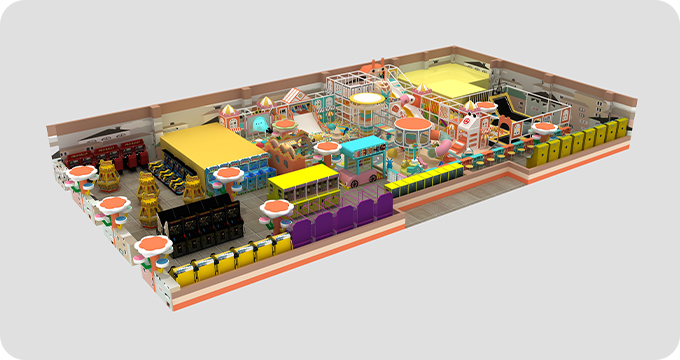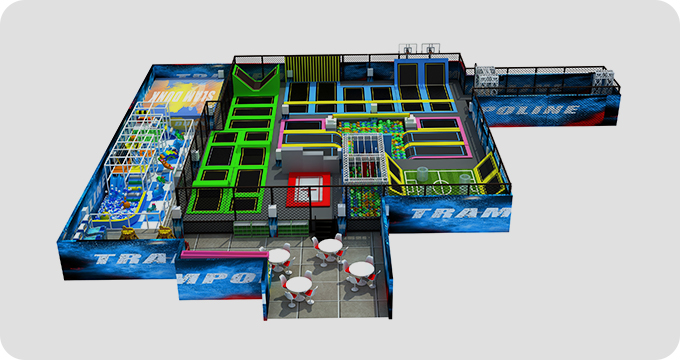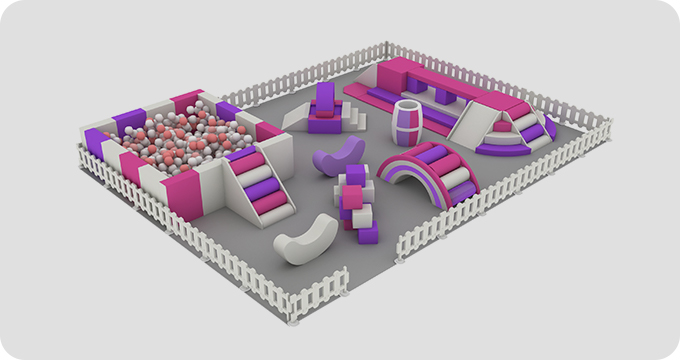Telephone: +86-13868831881
E-mail: info@woozoneplay.com
WhatsApp: +86-13868831881
Web:https://www.woozoneplay.com/
Address: Yangwan Industrial Park, Qiaoxia Town,Yongjia County, Wenzhou City, Zhejiang, China.
The indoor playground equipment industry has experienced significant growth globally, driven by rising demand for family entertainment, urbanization, and increased focus on child development. For international buyers, procuring indoor playground equipment involves navigating complex supply chains, safety standards, and market dynamics. This guide provides a multi-dimensional analysis tailored to buyers at different levels—from small startups to large chains—across pre-procurement, procurement, and post-procurement stages. It combines macro-industry insights with technical parameters and practical advice, ensuring a holistic approach to procurement. With over 4000 words of expert guidance, this handbook empowers buyers to make informed decisions while emphasizing safety, quality, and value.
The global indoor playground equipment market is projected to reach USD 5.2 billion by 2027, growing at a CAGR of 6.8% (Source: Grand View Research). Key drivers include:
Urbanization: Limited outdoor spaces in cities boost demand for indoor facilities.
Health and Safety Trends: Post-pandemic, hygiene and safety standards have become paramount.
Technology Integration: Interactive elements like augmented reality (AR) are gaining traction.
Sustainability: Eco-friendly materials (e.g., recycled plastics) are increasingly prioritized.
Regional trends vary:
North America: High disposable income and strict safety regulations (e.g., ASTM F1487).
Europe: Emphasis on sustainability (EU CE marking) and innovative designs.
Asia-Pacific: Rapid growth in emerging economies like China and India, with cost-effective manufacturing hubs.
Supply Chain Volatility: COVID-19 disruptions highlighted risks in logistics and raw material sourcing.
Regulatory Complexity: Buyers must navigate diverse standards (e.g., ASTM in the U.S., EN1176 in Europe).
Competition: Low-barrier entry segments face price wars, while premium segments require differentiation.
Leading manufacturers include Playworld, Landscape Structures, and smaller innovators like Woozone, which emphasizes modular designs for flexibility. Buyers should monitor trends such as:
Smart Playgrounds: IoT sensors for real-time equipment monitoring.
Customization: Themed designs (e.g., adventure or educational themes) to enhance user engagement.
International buyers fall into three tiers, each with distinct needs:
Budget: Limited capital, often under USD 50,000.
Focus: Cost-effectiveness, basic safety compliance, and quick ROI.
Procurement Priorities: Off-the-shelf solutions, minimal customization, and supplier flexibility.
Budget: USD 50,000–200,000.
Focus: Balancing quality with scalability; may require partial customization.
Procurement Priorities: Supplier reliability, mid-range technical features, and after-sales support.
Budget: Exceeding USD 200,000.
Focus: Brand alignment, innovation, and long-term partnerships.
Procurement Priorities: Full customization, rigorous safety certifications, and integrated services (e.g., installation and maintenance).
Step 1: Needs Assessment
Define Objectives: Align equipment with target demographics (e.g., age groups: toddlers (1–3) vs. children (4–12)).
Space Planning: Calculate area requirements (e.g., 50–100 sq. ft. per child) and layout constraints.
Budgeting: Include hidden costs (shipping, installation, and maintenance). Total cost of ownership (TCO) should guide decisions.
Step 2: Market Research
Supplier Shortlisting: Use platforms like Alibaba or industry fairs (e.g., IAAPA Expo). Verify suppliers via certifications (ISO 9001) and case studies.
Regulatory Awareness: Identify applicable standards:
ASTM F1487: U.S. standard for structural integrity and fall height.
EN1176: European standard for material safety and accessibility.
AS4685: Australian standard for impact attenuation.
Step 3: Risk Mitigation
Supply Chain Diversification: Avoid over-reliance on single regions; consider tariffs and logistics.
Sample Testing: Order prototypes to evaluate quality firsthand.
Step 1: Technical Evaluation
Material Specifications:
Plastics: HDPE (high-density polyethylene) for durability; avoid PVC due to toxicity risks.
Metals: Galvanized steel with powder coating for corrosion resistance.
Soft Materials: Phthalate-free vinyl for padding.
Safety Parameters:
Fall Height: Not exceeding 8 feet for toddlers; use impact-absorbing surfaces (e.g., rubber mulch).
Entrapment Risks: Gaps must be <3.5 inches or >9 inches (per ASTM).
Structural Load: Minimum load capacity of 250 lbs per component.
Design Features:
Age Appropriateness: Separate zones for different age groups.
Hygiene: Antimicrobial coatings and easy-clean surfaces.
Accessibility: ADA-compliant ramps for inclusivity.
Step 2: Supplier Assessment
Audit Checklists:
Factory inspection: Assess production capacity and labor conditions.
Certification validity: Ensure up-to-date ISO or ASTM compliance.
References: Contact past clients for feedback on reliability.
Brand Considerations: Established brands like Woozone offer tested designs but may cost more; weigh innovation against proven track records.
Step 3: Negotiation Strategies
Pricing: Request bulk discounts; consider FOB (Free on Board) vs. CIF (Cost, Insurance, Freight) terms.
Contract Clauses: Include warranty (minimum 5 years), spare parts availability, and penalty clauses for delays.
Payment Terms: 30% advance, 40% pre-shipment, 30% after installation.
Step 1: Installation and Commissioning
Professional Installers: Use supplier-provided teams to ensure compliance with manuals.
Safety Inspections: Conduct pre-opening checks for sharp edges or loose bolts.
Step 2: Maintenance and Support
Routine Schedules: Daily visual inspections; quarterly structural audits.
Spare Parts Management: Stock critical components (e.g., nets, bearings).
Training: Staff training on emergency protocols and basic repairs.
Step 3: Performance Review
ROI Calculation: Monitor footfall, customer satisfaction, and incident rates.
Feedback Loops: Use surveys to identify improvement areas; plan upgrades every 3–5 years.
ASTM F1487-21: Covers structural integrity, with specific requirements for:
Guardrails: Height ≥ 38 inches for platforms over 30 inches high.
Impact Attenuation: Tested using a headform criterion (HIC < 1000).
EN1176-1:2017: Focuses on entrapment prevention and material non-toxicity.
HDPE: UV-resistant, withstands temperatures from -50°C to 60°C.
Galvanized Steel: Zinc coating thickness ≥ 80 µm for outdoor-indoor hybrid setups.
3D Modeling: Use software like AutoCAD for layout simulations.
Thematic Elements: Work with designers to incorporate brand colors or educational graphics.
Define target age group and capacity.
Research local regulations and insurance requirements.
Allocate budget for TCO (include 15% contingency).
Verify certifications (ISO, ASTM, EN).
Request material test reports.
Visit factories or use third-party inspection services.
Over-Customization: Can delay projects and increase costs by 20–30%.
Ignoring Logistics: Factor in port congestion; opt for suppliers with experience in your region.
Neglecting Training: Inadequate staff knowledge leads to safety incidents.
Procuring Indoor playground equipment requires a strategic blend of market knowledge, technical rigor, and practical planning. By understanding macro-trends, tailoring approaches to buyer hierarchy, and adhering to stage-specific guidelines, international buyers can mitigate risks and maximize value. Emphasizing long-term partnerships over transactional deals—whether with global giants or niche players like Woozone—ensures sustainable success. As the industry evolves, staying abreast of innovations in safety and sustainability will be key to creating engaging, safe play environments.
This guide serves as a living document; buyers should consult legal and safety experts for region-specific advice. For further resources, refer to organizations like the International Play Equipment Manufacturers Association (IPEMA).

Transform any space into a playground of imagination and adventure with our versatile indoor playground equipment, designed for endless fun and safety.

Experience endless fun and excitement with our high-quality trampoline park equipment, designed for ultimate bounce and adventure in a safe and engaging environment.

Delight your little ones with our Baby Soft range, featuring soft, cushioned play areas that are perfect for toddlers to explore safely and enjoyably."
